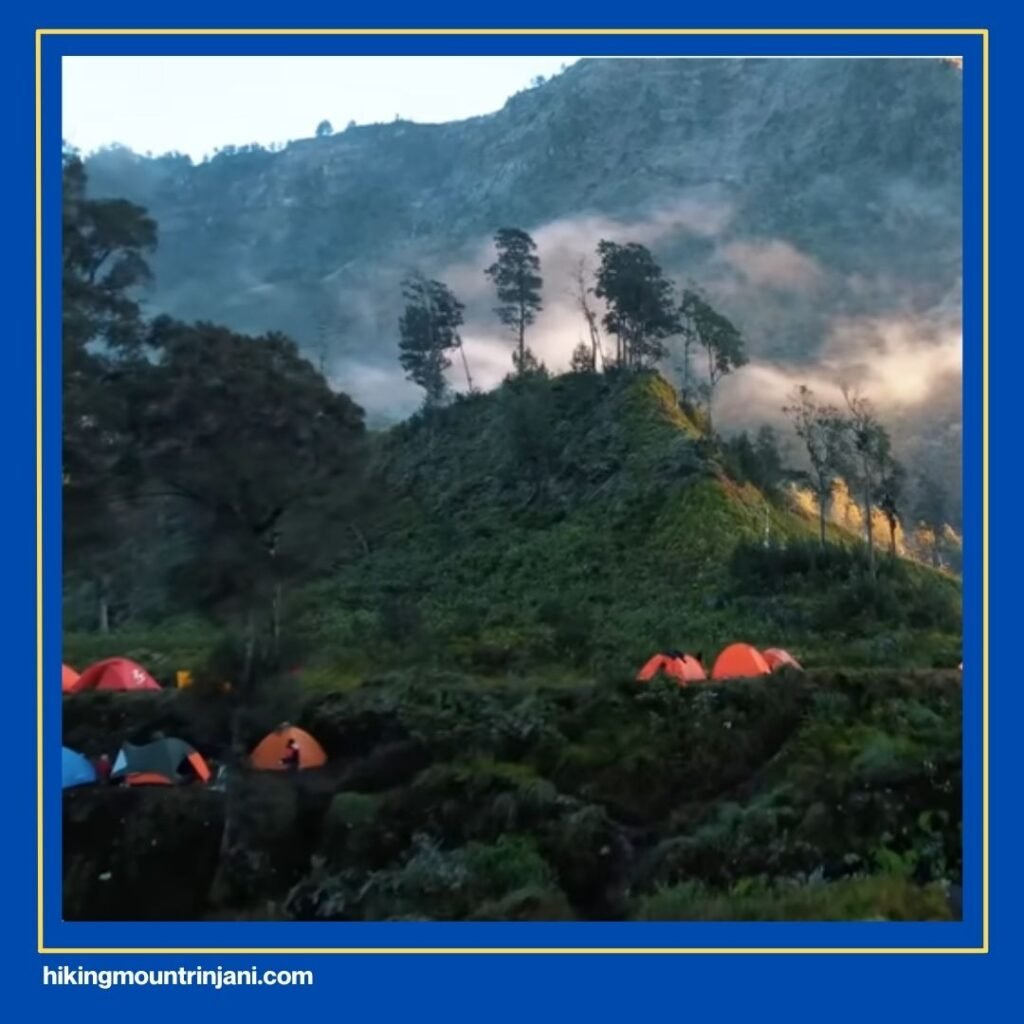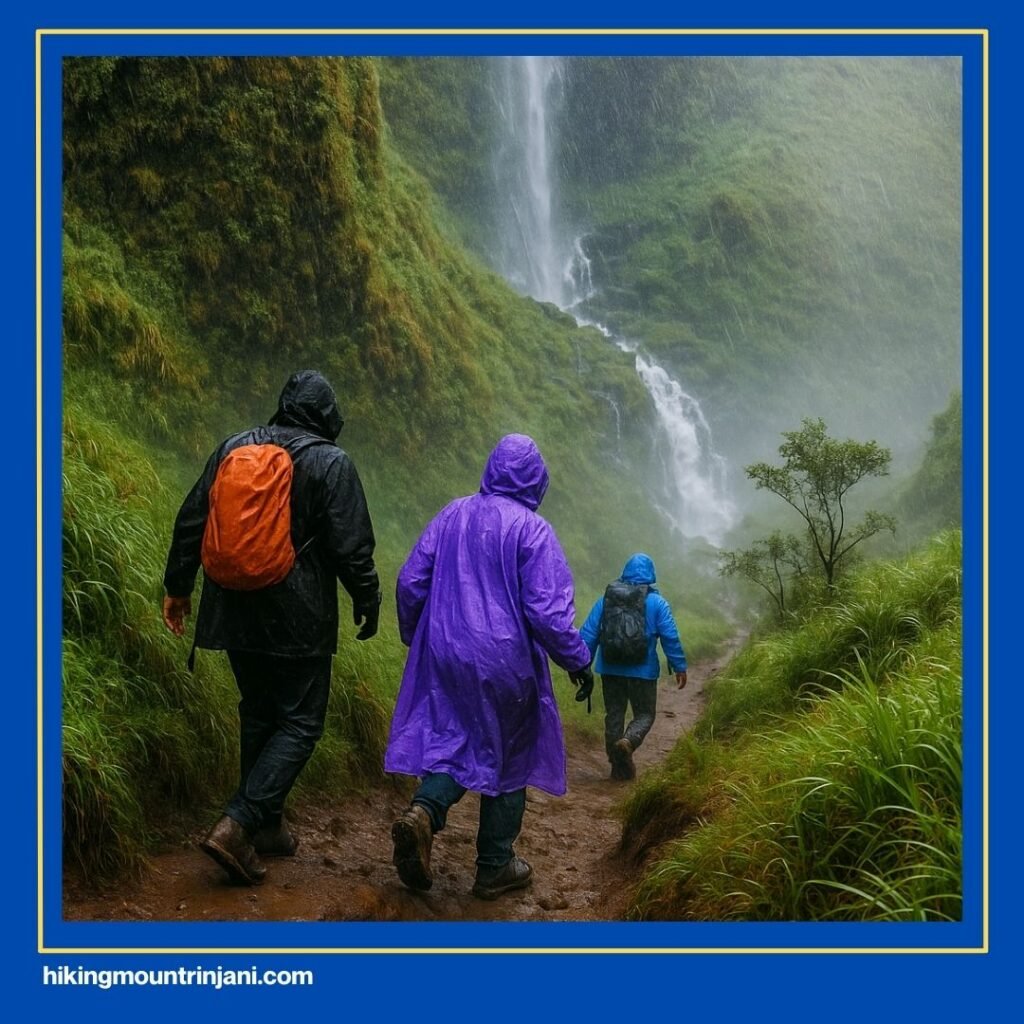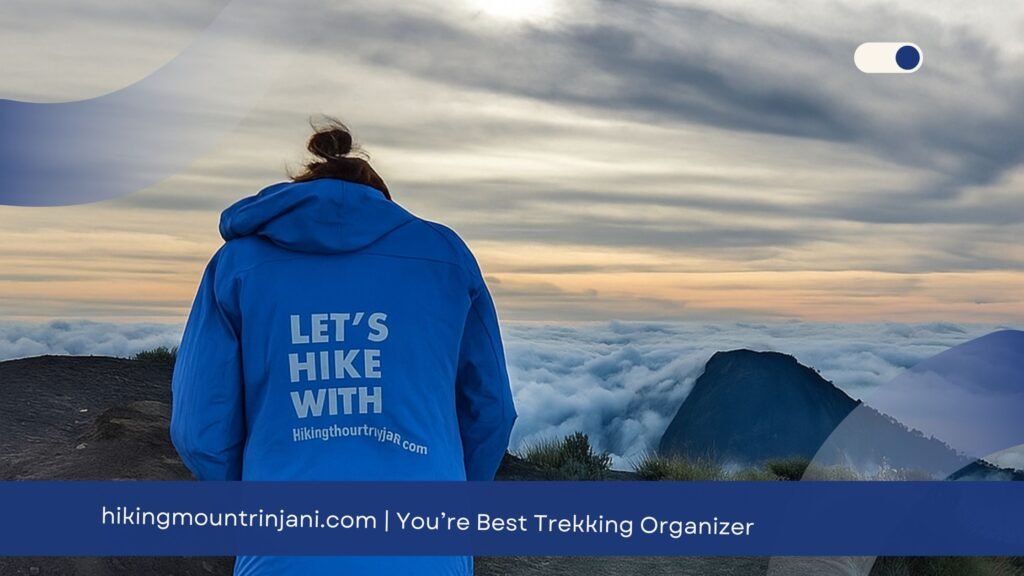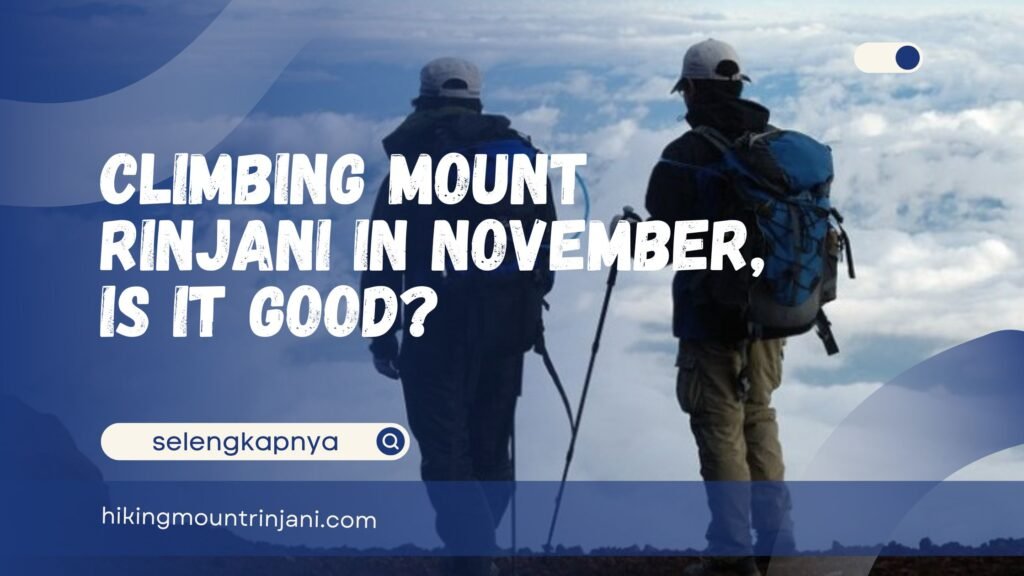Climbing Mount Rinjani in November – Climbing Mount Rinjani is always tempting, but if your travel dates fall in November, you’re probably wondering if it’s the right choice. Unlike the dry months of July or August when the mountain is packed with trekkers, November sits at the turning point of the seasons in Lombok.
This month marks the beginning of Indonesia’s rainy season, and that changes almost everything about the trek. Trails can shift from dusty to muddy, weather can swing between sunny mornings and sudden downpours, and visibility may not always be on your side. For some, that sounds like a deal breaker. But for others, especially those seeking quieter trails and a different side of Rinjani, November can actually offer a rare kind of adventure.
If you’re traveling from the United States, Australia, Singapore, or Malaysia, this decision matters even more. You might only have one shot at Rinjani during your trip, so timing is crucial. Should you risk climbing in November? Or is it better to wait for the “perfect” season?
In this guide, you’ll discover what it really means to hike Rinjani in November, the best time overall to plan your climb, the pros and cons of November treks, and what to prepare if you decide to go ahead. By the end, you’ll know exactly whether November is your green light, or a signal to rethink your plans.
Can You Hike Mount Rinjani in November?

The short answer is yes—but with conditions. Technically, the Rinjani trekking season runs from April to early January, when the trails are officially open to the public. November falls within this window, which means you can still climb. However, the situation on the ground can be quite different compared to the peak dry season.
November is the gateway to the rainy season in Lombok. Rain showers start to appear more frequently, and while the mountain may still welcome climbers, the weather is far less predictable. Some days, you’ll get stunning blue skies and clear summit views. Other days, heavy clouds or afternoon rains can make the trek muddy and visibility poor.
This uncertainty is what makes November tricky. Officially, the park management might still allow trekking, but sometimes routes are temporarily closed for safety if conditions get too rough. That’s why your most important step is to stay in touch with a local trekking organizer (TO). They are the first to know whether the mountain is open, whether a route is safe, and what adjustments you need to make.
So, can you hike Mount Rinjani in November? Yes, you can, but it’s not for everyone. If you’re a first-time trekker expecting perfect conditions, November may disappoint. But if you’re flexible, adventurous, and prepared for a bit of unpredictability, November can offer a unique, less-crowded experience on one of Southeast Asia’s most iconic peaks.
Read also: How Long to Climb Mount Rinjani? Fast or Slow, It Depends on You
Best Time to Climbing Mount Rinjani

If you ask experienced trekkers or local guides, they’ll tell you there’s a “golden window” for climbing Mount Rinjani. That period is between May and September, right in the middle of Indonesia’s dry season.
During these months, the weather is generally stable, the skies are clear, and the trails are dry, making the trek safer and more comfortable. It’s also when you have the best chance to catch Rinjani’s famous sunrise above the clouds and the crystal-blue waters of Segara Anak crater lake.
But of course, the best time depends on what you want from the climb:
- May – June: Fresh greenery after the rains, fewer crowds, and clear skies. A favorite for photographers.
- July – August: Peak season with the most reliable weather, but also the busiest. Campsites and trails can get crowded.
- September – early October: Still dry, but slightly quieter. A great balance between good weather and fewer people.
- November – early January: The shoulder of the rainy season. Treks are still possible, but conditions get wetter and more unpredictable.
From mid-January to March, Rinjani is completely closed for safety reasons and trail restoration. This break helps prevent accidents during the heaviest rains and gives the ecosystem time to recover.
So if your priority is safety, comfort, and stunning views, plan for the dry months. But if you’re curious about what climbing feels like at the edge of the rainy season, then November offers a more challenging, but also more peaceful—alternative.
Pros and Cons of Climbing Mount Rinjani in November

Climbing Mount Rinjani in November isn’t simply a yes-or-no decision. It’s about weighing the advantages and disadvantages of trekking during the early rainy season. Let’s break it down:
1. Weather Conditions in November
- Pros: You may still get sunny mornings, fresh air, and fewer clouds compared to December or January. Temperatures on the mountain remain cool and pleasant.
- ons: Afternoon showers are common, and sometimes heavy. Rain can make the trail slippery, increase the risk of landslides in certain spots, and reduce visibility at higher altitudes.
2. Trail Safety and Accessibility
- Pros: Fewer trekkers mean quieter trails, easier access to campsites, and more personal space when enjoying the views.
- Cons: Wet trails can slow down your pace. Some routes, especially toward the summit or crater rim, might be temporarily restricted if conditions are unsafe.
3. Crowds and Atmosphere
- Pros: Unlike July or August when Rinjani feels packed, November gives you a more peaceful experience. You can enjoy moments of solitude and take photos without large groups in the background.
- Cons: With fewer trekkers, the vibe can feel a bit too quiet for those who enjoy the energy of a crowd. Some campsites may also feel less lively.
4. Overall Trekking Experience
- Pros: If you love adventure and don’t mind a bit of rain, November can show you a more “wild” side of Rinjani. It feels raw, authentic, and different.
- Cons: If you’re a first-timer seeking comfort and guaranteed views, you might end up frustrated when the weather doesn’t cooperate.
In short: November climbs are all about trade-offs. You’ll gain solitude and a unique experience, but you’ll also need to accept higher risks and less predictable conditions.
Read also: Rinjani Porter Price 2025: How Much Does It Cost?
What to Prepare if You Decide to Climb Mount Rinjani in November
If you’ve decided that climbing Mount Rinjani in November is worth the challenge, preparation becomes even more crucial. Unlike the dry season when conditions are more predictable, the rainy season requires you to be extra cautious and organized. Here’s what you should focus on:
1. Work With a Trekking Organizer (TO)

The very first step is to contact a professional trekking organizer in Lombok. They know the real-time conditions of the mountain and can confirm whether certain trails are open or temporarily closed. Local TOs also take care of your trekking permits, logistics, and safety protocols—things you cannot manage alone in unpredictable weather.
If you’re looking for a reliable option, you can reach out to Hiking Mount Rinjani (hikingmountrinjani.com).
They’re popular among international climbers because of their professionalism, updated information, and complete trekking gear. Their camping equipment is particularly comfortable, which makes a huge difference when you’re dealing with wet conditions.
And don’t worry about food—you’ll get freshly prepared meals that many climbers say are better than expected.
2. Gear Up for Rain and Cold
In November, waterproof gear is a must. Pack a good rain jacket, quick-dry clothing, and extra socks. The trail can get muddy, so sturdy trekking shoes with solid grip are essential. Your TO usually provides tents and sleeping bags, but you should double-check that they’re waterproof and warm enough for wet nights.
3. Be Flexible With Your Itinerary
November weather can shift quickly. Be ready for delayed starts, longer trekking hours, or changes in campsite locations. This flexibility is not a setback—it’s part of the adventure. With the right mindset, you’ll enjoy the journey even if plans change.
4. Focus on Safety Over Summit
Many climbers dream of reaching Rinjani’s summit, but in November, safety should always come first. Sometimes the summit trail may be too risky due to slippery rocks or heavy rain.
If that happens, enjoy the crater rim and Segara Anak Lake instead. These spots already offer world-class views and unforgettable moments.
Planning to climb Rinjani? Get in touch with the trekking company below!
|

